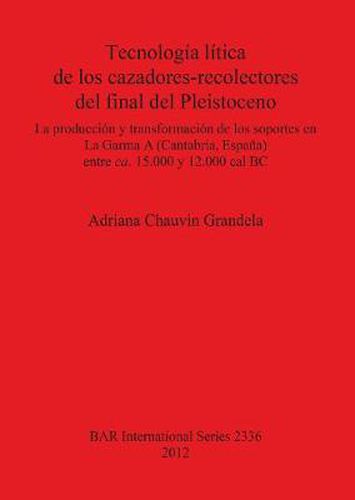Tecnologia litica de los cazadores-recolectores del final del Pleistoceno: La produccion y transformacion de los soportes en La Garma A (Cantabria Espana) entre ca. 15.000 y 12.000 cal BC
Adriana Chauvin Grandela

Tecnologia litica de los cazadores-recolectores del final del Pleistoceno: La produccion y transformacion de los soportes en La Garma A (Cantabria Espana) entre ca. 15.000 y 12.000 cal BC
Adriana Chauvin Grandela
This title is printed to order. This book may have been self-published. If so, we cannot guarantee the quality of the content. In the main most books will have gone through the editing process however some may not. We therefore suggest that you be aware of this before ordering this book. If in doubt check either the author or publisher’s details as we are unable to accept any returns unless they are faulty. Please contact us if you have any questions.
‘La Garma A’ is a small cave located in the lower third of La Garma Hill (Cantabria, Spain), at 80m above sea level. It is situated near the village of Omono, in the municipal district of Ribamontan al Monte, near the eastern shore of Santander Bay, about 12km to the southeast of the city. To undertake this research the author examined the lithic archaeological record of part of the Palaeolithic stratigraphy of the archaeological deposit at La Garma A, covering the period between 15,100 and 12,200 years ago in calibrated chronology, corresponding to the periods known as middle and upper Magdalenian. The starting point in the development of the objectives of this study was to determine the extent to which the lithic assemblage at La Garma A matches previous expectations based on the geographical location of the site, in Cantabrian Spain, and its chronology. In addition, the author looks at how the lithic technology evolved over three thousand years and the contribution its study can make to the overall interpretation of the site. At the same time, more specific and technical objectives are related to the definition of knapping processes, the raw materials chosen for retouching in its different formats and size modules, and for the manufacture of differenttypes of implements. The end result of the research is an attempt to understand the evolution in the use of the lithic assemblages in the sequence at La Garma A, corresponding to the time segment of 15,000-12,000 cal BC, and to provide a platform for further investigations into the identification of the raw materials and quarries involved. Further analysis of some of the cave’s features will be fundamental for the understanding of the hunter-gatherers’ way of life in the region, whereas the study of other sites of similar chronology will complete the regional panorama.
This item is not currently in-stock. It can be ordered online and is expected to ship in 7-14 days
Our stock data is updated periodically, and availability may change throughout the day for in-demand items. Please call the relevant shop for the most current stock information. Prices are subject to change without notice.
Sign in or become a Readings Member to add this title to a wishlist.


